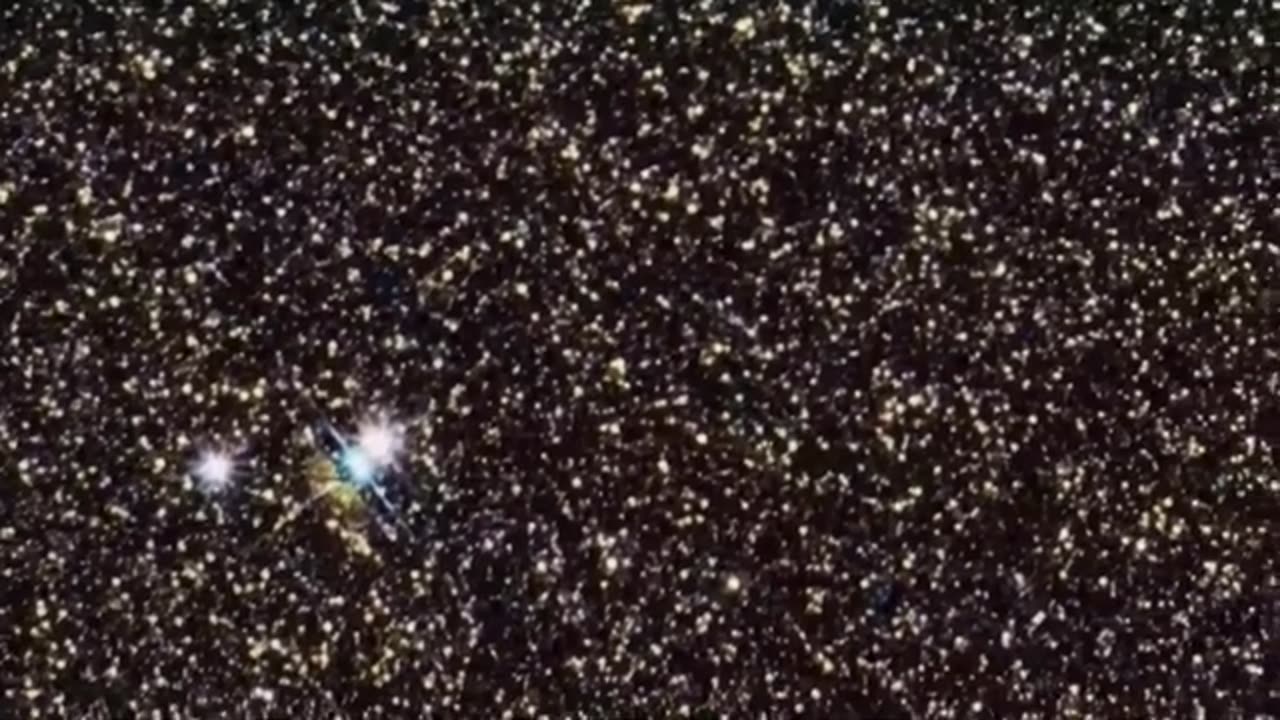Premium Only Content

Simulated Image Demonstrates the Power of NASA’s Nancy Grace Roman Space Telescope
NASA’s Nancy Grace Roman Space Telescope will capture the equivalent of 100 high-resolution Hubble images in a single shot, imaging large areas of the sky more than 1,000 times faster than Hubble. In several months, the Roman Space Telescope could survey as much of the sky in near-infrared light—in just as much detail—as Hubble has over its entire three decades. Although Roman has not yet opened its wide, keen eyes on the universe, astronomers are already running simulations to demonstrate what it will be able to see and plan their observations. This simulated image of a portion of our neighboring galaxy Andromeda (M31) provides a preview of the vast expanse and fine detail that can be covered with just a single pointing of the Roman Space Telescope. Using information gleaned from hundreds of Hubble observations, the simulated image covers a swath roughly 34,000 light-years across, showcasing the red and infrared light of more than 50 million individual stars detectable with Roman. While it may appear to be a somewhat haphazard arrangement of 18 separate images, the simulation actually represents a single shot. Eighteen square detectors, 16-megapixels each, make up Roman’s Wide Field Instrument (WFI) and give the telescope its unique window into space. With each pointing, the Roman Space Telescope will cover an area roughly 1⅓ times that of the full Moon. By comparison, each individual infrared Hubble image covers an area less than 1% of the full Moon. Roman is designed to collect the big data needed to tackle essential questions across a wide range of topics, including dark energy, exoplanets, and general astrophysics spanning from our solar system to the most distant galaxies in the observable universe. Over its 5-year primary mission, Roman is expected to amass more than 20 petabytes of information on thousands of planets, billions of stars, millions of galaxies, and the fundamental forces that govern the cosmos. For astronomers like Ben Williams of the University of Washington in Seattle, who generated the simulated data set for this image, Roman will provide a valuable opportunity to understand large nearby objects like Andromeda, which are otherwise extremely time-consuming to image because they are so big on the sky. The Roman Space Telescope could survey Andromeda nearly 1,500 times faster than Hubble, building a panorama of the main disk of the galaxy in just a few hours.
-

Steven Crowder
3 hours ago🔴Game Over: Trump's EU Trade Victory Shows How Stupid "Experts" Really Are
228K114 -
 LIVE
LIVE
Neil McCoy-Ward
51 minutes agoTHE UK 🇬🇧 JUST ENDED 140 YEARS OF FREE SPEECH! (How Did It Come To THIS?!)
61 watching -
 LIVE
LIVE
The Charlie Kirk Show
1 hour agoTHE CHARLIE KIRK SHOW IS LIVE 07.28.25
5,036 watching -
 LIVE
LIVE
JuicyJohns
4 hours ago🟢#1 REBIRTH PLAYER 10.2+ KD🟢 !loadout
815 watching -
 52:11
52:11
Anthony Pompliano
1 hour agoWhy Bitcoin Will EXPLODE During The AI Era
3.46K -
 1:06:00
1:06:00
The Rubin Report
2 hours agoMajor Company’s Must-See Ad May Be the Official Death of Woke
24.9K28 -
 LIVE
LIVE
Robert Gouveia
1 hour agoBongino's "SHOCKING" Bombshell! Peter Strozk PANIC! Trump Assassin Case! Climate Change PLOT!
1,704 watching -
 LIVE
LIVE
LFA TV
17 hours agoLFA TV ALL DAY STREAM - MONDAY 7/28/25
4,420 watching -

Grant Stinchfield
1 hour agoImporting Capital, Not Chaos: The Pro-America Visa
559 -
 LIVE
LIVE
Flyover Conservatives
12 hours agoTRUMP’S $1.9 TRILLION TRADE BOMBSHELL—EU & JAPAN BOW TO THE DEALMAKER - Dr. Kirk Elliott; Are We Watching History Repeat? Nazi Playbook vs. Modern Democrats | FOC Show
403 watching